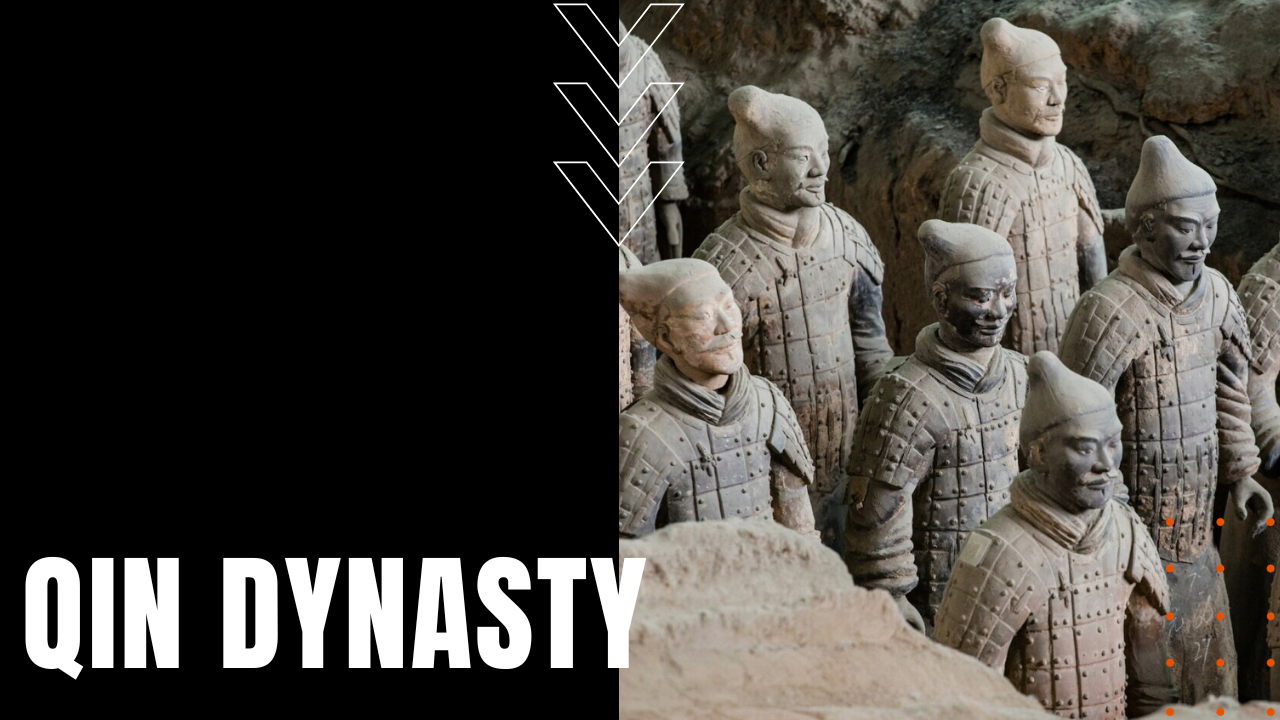The Qin Dynasty

Ending the Warring States Period in 221 B.C. China, Qin emperor Ying Zheng took the name Qin Shi Huang—a merging of the words “Mythical Ruler” and “God, conquering all of the Zhao Dynasty states, to become the first solitary emperor of China. Traveling in secrecy through a system of tunnels and clandestine residences, Qin Shi Huang created a standardized, non-alphabetic written script, which enabled Chinese of differing cultures and languages to communicate, at the same time standardizing weights, measurements and currency that streamlined trade and commerce across his vast and flourishing empire.
Major Infrastructure
In a dynasty marked by engineering marvels, Qin Shi Huang built a unifying network of some 4,000 miles of roads, including a 500-mile superhighway to the Ziwu Mountain range, which transported some 300,000 workers and supplies for the construction of the Great Wall of China, which would eventually span 13,000 miles, from snow-covered mountains in the west to the Yellow Sea. Now known for his audacious works of art and architecture, Qin Shi Huang melted down weapons collected during his many conquests to cast giant statues for his capital city of Xianyang, before sending some 700,000 workers to create his massive underground tomb in the Lishan Mountains.
Never Entered
Although never entered due to Qin Shi Huang’s use of toxic mercury for his underground rivers, archeological surveys and magnetic imaging reveals an underground mausoleum surrounded by a wall measuring 1,500 by 1,300 feet, protecting a tomb guarded by bronze chariots and horses. The site also includes a complex of temples, chambers and administrative buildings, each adorned by terracotta statues of acrobats and government officials. Discovered by farmers in 1974, Qin Shi Huang protected his afterlife residence with some 8,000 terracotta warriors and over 600 terracotta horses and chariots, and while only 2,000 have been unearthed through painstaking archeological excavations, each warrior is unique in appearance and once painted in elaborate colors.
End of a Dynasty
After his death in 210 B.C., officials installed Qin Shi Huang’s younger son as the new emperor, which led to a string of rebellions to his rule. After warlord Xiang Yu defeated the Qin army in battle, dividing the empire into 18 states, Liu Bang assumed the thrown at the onset of the Han Dynasty, making the Qin Dynasty, one of the shortest, unifying reigns in China’s 3,600-year history.
